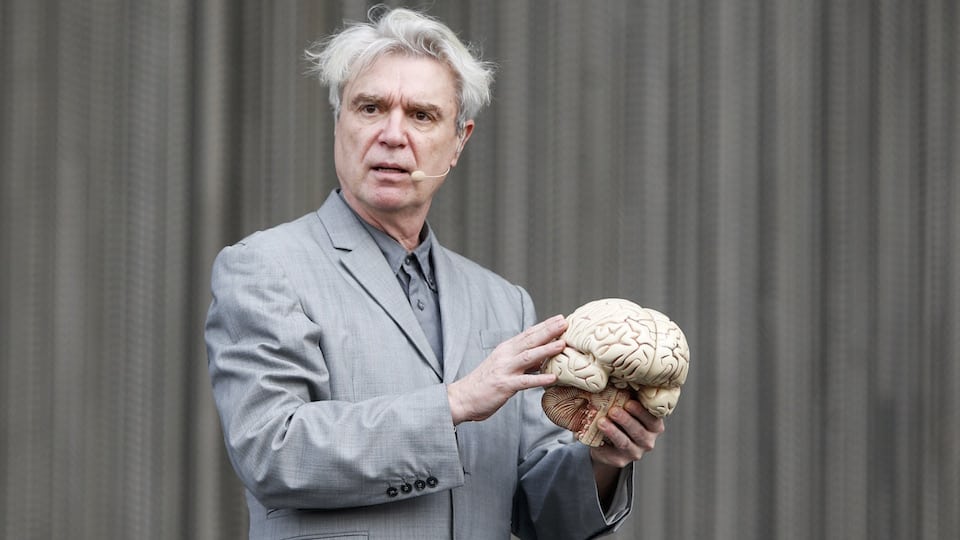You would be right to label David Byrne a “renaissance man.” Beyond his storied career, his collaborations and efforts in the music industry have made him integral in delivering interesting projects. Along with his music, he’s penned or contributed to no less than 70 books. Subjects include topics for children (Stay Up Late), works of fiction (True Stories), and — as expected — works about the music industry (What Songs Look Like). In that latter category, Byrne’s How Music Works is mighty interesting.
In How Music Works, Byrne begins by taking us through a short history of live music. Specifically, he uses early opera performances as an example: the audience rarely sat quietly and were often eating, speaking, and paying only partial attention. Byrne then describes how early 16th and 17th-century orchestral performances relied on the dynamics of the room and placement of the instruments. With no amplification, percussive instruments were pushed toward the back of the room while strings were pulled forward. He compares these dynamics to some of his early performances in small places like CBGB’s or Tootsies. Byrne then switches to African music, the role of repetitive percussiveness and the need to keep songs simple so that they could be passed down. He leads the reader through the 18th and 19th centuries and into the late 20th century to describe how venues changed along with the style of music.
Byrne pauses to reminisce about his attraction to music in his younger years. Being afflicted with a mild case of Asperger’s caused him to perform — but then to retreat back into privacy afterward. After enrolling in art school, he partnered with friend Mark Kehoe to perform publicly for the first time. With Mark on accordion and David on the ukulele (or just standing on his head while Kehoe performed), he began to feel the pull towards entertaining listeners. It also drove him to imagine how performances might be made more unique and immersive. It wasn’t enough to just stand and play a song or two, Byrne wanted his audience to be part of the performance. In the early 1970s, Byrne and Chris Frantz decided to form a “real band” and perform cover material. Drawn to glam rock, he dyed his hair and started wearing leather jeans. He also wrote original music and eventually pulled together additional musicians to form Talking Heads. Byrne vividly describes living in dirty accommodations, often sharing a one or two-room apartment with his entire band and playing questionable venues.
Related: “David Byrne’s ‘American Utopia’ – The Movie”
Other chapters describe the procession from analog to digital music and the nuances that each brings to (or masks from) the listener. He covers how we began to record music (on wax rolls) and that this caused many music experts to wonder if this was the “end” of live performances. Thomas Edison challenged listeners to tell the difference between his wax recordings and a live musician, coaching the musician to try to mimic the low fidelity output of the recording. The chapters take us through phonographs, analog-recorded music, mixers, digitally recorded music, synthesizers, and even the compression process that produces MP3s.
There are chapters on how social media has influenced the success of amateur artists. With so many digital channels, the casual listener no longer has to abide by the recommendations of major music publications. Social media generates buzz that would otherwise not be possible through normal channels.
In the latter part of the book, Byrne goes into a great deal about the financial side of the music industry. He makes it clear that only very successful artists actually take home enough money to make a good living. In many cases, he funded efforts with his own money. Any up-front payments by record labels are often spent just recording and releasing music. When a label fronts the money for a tour, that must be paid back first from the performance revenue before any money makes it to the artist. Most mid-tier performers make just enough to support the band. Byrne takes the time to break down each cost component — percentages taken, distributions to A&R staff, and so on – making it clear that people who perform are really mostly doing it for the enjoyment and not with any real possibility to become wealthy.
Byrne closes this fascinating book with an analysis of the mathematics of music, going back to Greek theories. There’s a deep dive into the Hypophrygian mode and Kepler’s 1619 book Harmonices Mundi with its search for the mathematical proportions in everything (including music). How is music able to move us emotionally? How can sounds cause your brain to associate experiences with simple musical note combinations?
How Music Works is a grand tour. At nearly 400 pages, it’s not a weekend read, but nonetheless, it moves quickly. Byrne writes in a quirky and humorous style, as you would expect. If you’re an up-and-coming musician, there’s very specific advice and guidance, with real calculations of the financial aspects of recording and performing. If you’re interested in the history of music and performance, he’s got you covered. How Music Works is a deep but enjoyable dive into something that impacts our lives every day.
-Will Wills
Photo: Getty Images




Thanks Will….You make it sound so interesting, I have to purchase this book!
very well written, IMHO… and as a antifitron de la musica de el, since first time saw them when I was working NYC early 80’s cheers